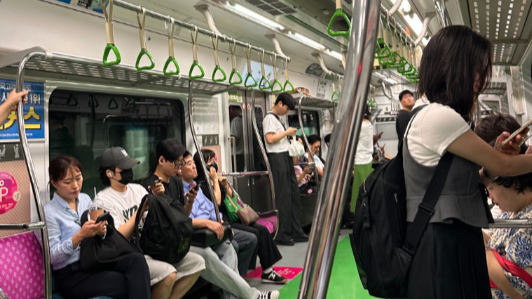Traveling around your host country is one of the best aspects of studying abroad and South Korea is no exception. South Korea boasts tons of beautiful historical and cultural sites, aesthetic shops of all kinds, unique cafes, and more. Thanks to South Korea’s well-developed public transportation, you'll have no trouble accessing all of your bucket list items. That being said, using public transportation in South Korea can be daunting for first time visitors so here are some tips to help you navigate it with confidence and ease!
Equip yourself with a T money card and the right apps
All buses and subways in South Korea can be boarded using a “T money card,” which is the equivalent of the SmarTrip card in DC. T money cards can be bought and reloaded at ticket vending machines in subway stations and at the cash register in convenience stores (GS25, eMart24, CU, 7-Eleven etc). You should always tap twice, once when boarding the bus/subway and one more time after getting off at your destination. If you need to transfer subway lines, you can board the next subway without tapping your T money card in between.
To plan your route, opt for NaverMaps or KakaoMaps over GoogleMaps. Both apps are reliable, but I personally found that NaverMaps was a little easier to use because of its simple interface. A con for both apps, however, is that the English spelling of some places may be spelled a bit abnormally. For example, one of the cafés I frequented near Yonsei’s campus is called “La Bonne Tarte” but is spelled as “La Bonneu Tarte” in NaverMaps. In such cases, searching for alternative spellings online or simply inputting the name of your destination in Korean usually works.
I also recommend downloading KakaoTaxi or Uber for late nights or when traveling around Jeju island. Jeju’s public transportation tends to be more sparse and less extensive.
Forget J-walking
South Korean transportation is incredibly safe and pedestrians get to benefit from innovative safety measures like in-ground traffic lights at crossroads. However, a little more vigilance is necessary when crossing roads or traversing smaller alleyways. Unlike in the US, drivers in Korea assert their right of way (sometimes aggressively), meaning that J-walking is a huge no-go in South Korea. J-walking out of habit in South Korea can be especially dangerous and stare-downs with drivers may not always be successful, so please ditch the habit before coming! Also, it’s important to be careful when walking in smaller alleys where vehicles and pedestrians share the same space and there are no designated sidewalks. I’ve experienced motorcycles zooming past just inches away from me without any warning on multiple occasions.
Take the KTX or intercity buses for long distance travel
If you’re considering traveling long distances, such as from Seoul to Busan, I recommend taking the KTX or an intercity bus. Both options will take you between cities at affordable prices and in the shortest time possible. Unlike public transportation, you will need to purchase a separate ticket online or in person (but the online option is much more reliable because seats run out fast).
Other tips
If you’re ever late to a meetup, check your map for numbers indicating the fastest transfer and board and exit the metro at the door corresponding to those numbers.
If you need to cross the road but encounter long stretches of barriers without any crosswalks in sight, look for the closest subway station and cross through the station to get to the other side of the road.
And finally, save the locations of your home, main school buildings, and bucket list destinations on your map app for easier navigation.
Sooyoung Kang
Spring 2024
GW Exchange - Yonsei University
Elliott School of International Affairs
International Affairs Major


